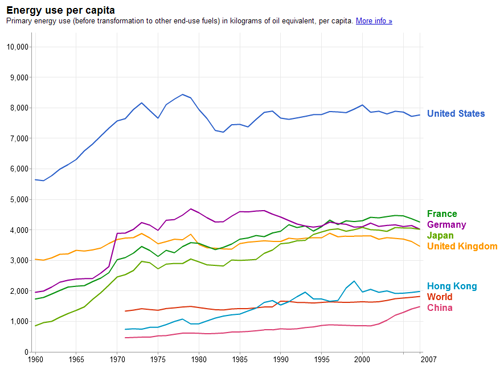It's Official: Western Europeans Have More Cars Per Person Than Americans
Discard your stereotypes: people in the U.S. own fewer passenger vehicles on average than in almost all other developed nations.

Cars line up at a traffic circle in Rome. (AP)
Americans love cars. We pioneered their mass production, designed iconic autos from the Model T to the Deville to the Corvette, and are a major exporter as well as importer. It's practically a part of the American national identity. But it turns out, according to a new paper from the Carnegie Endowment for International Peace on worldwide car usage, that American per capita car ownership rates are actually among the lowest in the developed world.

The U.S. is ranked 25th in world by number of passenger cars per person, just above Ireland and just below Bahrain. There are 439 cars here for every thousand Americans, meaning a little more than two people for every car. That number is higher in nearly all of Western Europe -- the U.K., Germany, France, Spain, Italy, Belgium, etc. -- as well as in Japan, Australia, and New Zealand. It's higher in crisis-wracked Iceland and Greece. Italians and New Zealanders have nearly 50 percent more cars per capita than does the U.S. The highest rate in the world is casino-riddled Mediterranean city-state Monaco, with 771 cars per thousand citizens.
America actually starts to look unusually auto-poor when cars per capita is charted against household consumption per capita, which the Carnegie paper explains are two typically correlated variables. That is, countries where household spend more money on average tend to also own more cars.

The countries on the right side of the line are where people own fewer cars than you might expect. The developed countries on that side of the graph include the super-dense Asian city states (Macao, Singapore, Hong Kong) where car ownership is tightly regulated to keep traffic down, and the United States. The countries far to the left of the line own more cars than expected: car-crazy Italy, for example, and sparsely populated Iceland.
I found this really surprising -- I'd always associated the U.S. closely with car culture, an impression anecdotally enforced by my interactions with non-Americans. So what explains the American outlier?
The Carnegie paper explains that car ownership rates are closely tied to the size of the middle class. In fact, the paper actually measures car ownership rates for the specific purpose of using that number to predict middle class size. Comparing the middle class across countries can be extraordinarily difficult; someone who counts as middle class in one country could be poor or rich in another. Americans are buying fewer cars -- is it possible that this is another sign of a declining American middle class? Even if Americans are on average richer than Europeans, after all, U.S. income inequality is also much higher. According to the Carnegie paper, about 9.6 of Americans' cars are luxury cars, an unusually high number; but it unhelpfully defines "luxury" as "Audi, BMW, Mercedes-Benz, and Lexus" (no Cadillacs?), which may help to explain why Germany's "luxury car" rate is 26.6 percent.
Still, it's also possible that the answer has less to do with Americans adhering to Carnegie's thesis about car ownership predicting middle class size and more to do with other, particularly American factors. Young Americans are spending less of their money on cars, as Jordan Weissmann explained, as they get driver's licences at lower rates and spend more of their money on, say, high-tech smart phones.
Amazingly, Americans still manage to suck up far, far more energy per person than do the people in those Western European nations with so many more cars per capita. Our oil usage per capita is about twice what it is in Western Europe, and here's our overall energy usage:

Whatever the reason for America's comparatively low car ownership rate, it may be time to update our stereotypes. The most car-obsessed place in the world isn't the nation of Detroit and Ford and Cadillac. It's Western Europe, the land of Peugeot and Smart Cars and Ferrari, where cars are most common.
Update: Some confusion in the comments about what kinds of vehicles are counted in the rankings. I respond below, but the gist is that this data includes all "passenger vehicles," which means cars, pickup trucks, SUVs, and minibuses. It does not include commercial freight trucks or buses with over nine seats, both of which the U.S. has a lot of, but which tend to be owned by businesses rather than individuals.
Update: Some confusion in the comments about what kinds of vehicles are counted in the rankings. I respond below, but the gist is that this data includes all "passenger vehicles," which means cars, pickup trucks, SUVs, and minibuses. It does not include commercial freight trucks or buses with over nine seats, both of which the U.S. has a lot of, but which tend to be owned by businesses rather than individuals.
Max Fisher is a former writer and editor at The Atlantic.